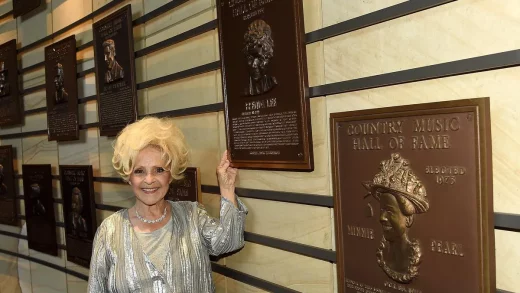:format(webp)/https://www.thestar.com/content/dam/thestar/entertainment/tiff/2022/08/31/buffy-sainte-marie-doc-premiering-at-tiff-looks-at-life-and-legacy-of-crusader-for-indigenous-issues/bsm1creditmattbarnes.jpg)
Buffy Sainte-Marie once nursed her infant son Cody on Sesame Street.
She was blacklisted on U.S. radio in the 1970s by no less than late FBI director J. Edgar Hoover.
She became the first Indigenous artist to win an Oscar in 1983 for best song, “Up Where We Belong” (shared with lyricist Will Jennings and Jack Nitzsche).
She won Canada’s much-coveted Polaris Music Prize in 2015 for her album, “Power In The Blood.”
There’s a lot you may not know about the Canadian-born celebrated singer/songwriter (whose songs have been covered by Donovan, Elvis Presley and Barbra Streisand). “Buffy Sainte-Marie: Carry It On,” a documentary premiering at TIFF, should help a great deal in illuminating a quite extraordinary life.
Buffy Sainte-Marie performs “Carry It On” at the 2019 CBC Music Festival.
The film premieres at TIFF on opening night, Sept. 8, and will screen at Hot Docs Ted Rogers Cinema on Sept. 23.
Sainte-Marie, 81, born on a Saskatchewan reserve but raised by adoptive parents in the U.S. — she has lived in Hawaii most of her adult life — has also been a lifelong activist for peace and Indigenous issues. (Her song, “Universal Soldier,” is a powerful condemnation of war.)
“I’m always looking to be effective, not just say what I think, but to be effective. And I’ve been lucky to see some changes in the world because of things I’ve been … involved in,” Sainte-Marie said.
Sainte-Marie’s advocacy work began with a scholarship fund she created in 1968 for Indigenous youth, followed by the development of a curriculum program for Grades 3 to 12 focusing on core subjects from an Indigenous perspective and, more recently, the Creative Native project to help Indigenous young people find a career in the arts.
She’s most proud that two early scholarship recipients, Dr. Lionel Bordeaux and Dr. Francis Bissenti, went on to found tribal colleges.
“It’s amazing that, with some little contribution from me, somebody else goes on to maximize (their) gift in a hundred ways. Think of all the students they have reached,” Sainte-Marie said.
Sainte-Marie’s activism, particularly with the American Indian Movement in the late 1960s and 1970s, earned her the enmity of Hoover (and other powerful establishment figures), leading Hoover to spearhead a concerted (and illegal) effort to discourage U.S. radio stations from playing her songs. Her career faltered as a result.
(“I didn’t know I was blacklisted. I just thought my career was slowing down,” Sainte-Marie says in the film.)
The film offers Sainte-Marie a chance to reflect back in a rich life — despite much adversity — and others such as Robbie Robertson, Joni Mitchell to serenade her with kind words about the legacy of her music.
Sainte-Marie offered her perspective on the federal government’s efforts to make amends to its Indigenous people through the Truth and Reconciliation Commission and the National Inquiry into Missing and Murdered Indigenous Women and Girls.
“I think that Truth and Reconciliation is a wonderful start. It nails down the facts, which are bulletproof, and provides steps to making things better,” Sainte-Marie said.
And the Canadian public?
“We’re making progress but it’s not point and click and you’re done. Educating people from all different backgrounds and levels of intelligence takes time. Some people learn fast, some people are resistant to learning. The good news about the bad news is that more people know about it (Indigenous issues),” she said.
Sainte-Marie’s perspective on the U.S., her long-time home, is less charitable.
“The farther south you go, the worse it is for Indigenous people. The USA is even more uneducated and tougher on Indians than Canada,” she said.
But Sainte-Marie remains determined and hopeful.
“The way that I can tolerate some of the things that go on in this world — man’s inhumanity to man — is to understand that we’re all different and big changes … take time. But I never get discouraged,” Sainte-Marie said.
“Changes sometimes take a long time and then all of a sudden, they happen overnight. So that’s why I never give up hope. I just keep on paddling my little canoe in the right direction, making a lot of noise, making it fun, and hoping other people will follow,” she added.
JOIN THE CONVERSATION



